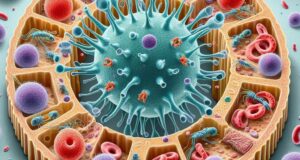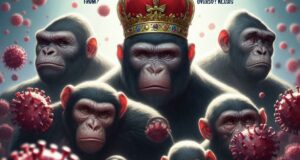Imagine your body as a well-guarded castle. Tall walls, watchful towers, and elite soldiers stand ready to fend off any enemy—be it a common cold, a virus, or bacteria. This defense system is your immune system. But what happens when the soldiers fall asleep at their posts? What if the gates remain open, unguarded?

At its core, immune deficiency means a weakened immune system—a situation where your body can no longer protect itself the way it should. This is the defining trait of AIDS, a condition that doesn’t kill directly, but rather removes your protection, leaving you vulnerable to everything else.
To truly understand immune deficiency, we need to go back to the root of the crisis and ask: AIDS—where did it come from?
The story of AIDS is not just a medical journey; it’s a mystery of nature, science, and society. Most researchers believe that HIV, the virus that causes AIDS, originated from a cross-species transmission between chimpanzees and humans in Central Africa. Through hunting and contact with infected blood, the virus entered the human population. It silently spread, adapted, and eventually grew into a global health crisis.
But why is HIV so dangerous? The answer lies in what it does to the immune system.
Think of the immune system as a well-organized military unit, led by CD4 cells, also known as T-helper cells. These are the commanders that issue orders to attack and defend against invaders. But HIV’s main target is these very commanders. It invades them, replicates within them, and slowly kills them off. It’s like enemy spies assassinating your generals one by one.
As HIV spreads and more CD4 cells are destroyed, the immune system becomes weaker. It’s not a sudden collapse—it’s a gradual disarmament. Over time, the body can no longer fight off infections that it once handled easily. This vulnerability defines immune deficiency.

Eventually, when the CD4 count drops below a critical level, and the person begins to suffer from rare infections or cancers, the condition progresses to AIDS—Acquired Immunodeficiency Syndrome. It’s not the HIV virus directly that ends lives; it’s the infections and diseases that take advantage of a body with no defenses.
So once again, the question returns: AIDS—where did it come from? It came not only from a viral mutation in another species, but from the very breakdown of our biological shields. AIDS exploits our body’s greatest strength—its immune system—and turns it into its greatest weakness.
What makes this even more tragic is that many people live for years without knowing they’re infected. HIV works in silence. By the time symptoms show, the immune deficiency has often already set in.
Thankfully, with modern antiretroviral therapy (ART), people can halt the progress of immune deficiency. The treatment doesn’t cure HIV, but it keeps the virus suppressed, allowing the immune system to regain strength and protect the body.
Understanding this concept is key to understanding the impact of HIV. It explains not just how AIDS harms the body, but why it’s so feared, and why the world continues to ask: AIDS, where did it come from?




